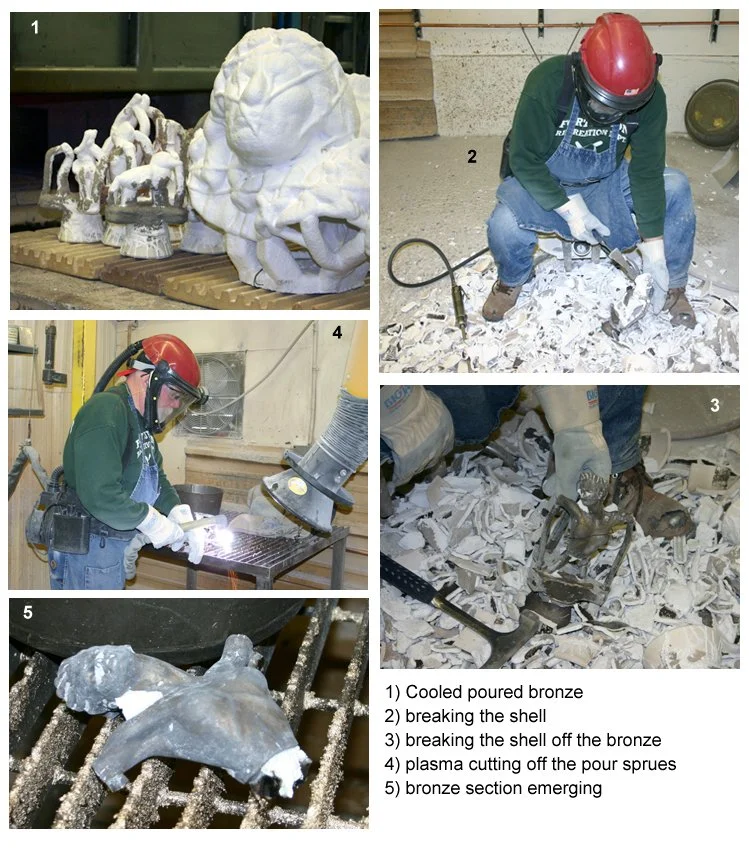FMD #48
Fannie Mae Duncan is in Bronze!
I had some photos from the shell-making process that helps describes this area of casting and thought they might be helpful here. These are from my sculpture “Ascension” and show the sprued and gated wax being dipped in the yellow slurry and then coated in the silica to build up the shell. This same process was used on the wax sections of Fannie Mae Duncan.
The foundry is a very busy place with many different sculptures being created. As a sculptor exhibiting in the Loveland Sculpture in the Park show, I was unable to be at the foundry to record the pouring and smashing part of the process for Fannie Mae. So the photos below are also from my “Ascension”. Here the wax, now encased in the ceramic shell is loaded into the furnace. This is the impressive, loud, hot and amazing part: the pour. The furnace is heated and the ceramic shells are loaded into the kiln - this melts and burns out all the wax leaving the ceramic shells hollow were the wax was. Once the wax is all burned out, the shells are removed and placed in a trough of sand to hold them steady and the bronze, molten to 2000ºF, is quickly poured into the shells and then set aside to cool.
The molten bronze has now taken the place of the wax and once the bronze is cool it is time to remove the shell. By remove, I mean smash and destroy. They employ hammers and pneumatic tools to chisel and break all the shell off and then use a sand-blaster to remove the stubborn bits and to clean the bronze a bit. Then they will cut off all the sprues and gates and prepare to begin the process of welding all the pieces back together again.
The bronze sections are then welded back together and the piece is ready to being the process of ‘chasing’, which means to remove any seams, blend the welds and correct any areas that need refining after the metal pour.
If you would like to see this fascinating process in person, Art Castings of Loveland offers tours. Below is a video from Art Castings of Loveland.




